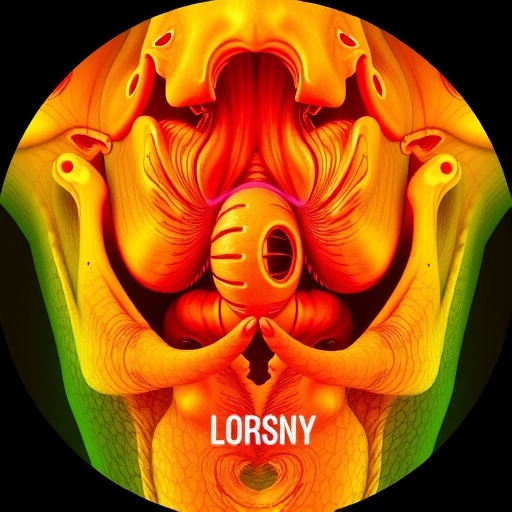
In an era where technological advancements are profoundly impacting the medical field, researchers continue to explore innovative solutions that drive progress in patient outcomes and diagnostic accuracy. The cutting-edge work by Lei, Yang, and Yang highlights groundbreaking developments in the arena of nasopharyngeal endoscopy through the application of deep learning methodologies. Their study, titled “A Deep Learning Method for Automated Site Recognition of Nasopharyngeal Endoscopic Images,” represents a significant leap forward in the automation of medical image analysis, specifically focused on identifying key anatomical sites within the nasopharynx.
The importance of this research cannot be overstated, as accurate site recognition during endoscopic procedures is pivotal for diagnoses and treatment plans in patients suffering from various conditions, including cancers of the head and neck. Traditionally, such assessments have relied heavily on the expertise of healthcare professionals, which can be subject to human error and variability. However, by utilizing advanced deep learning techniques, this new approach aims to standardize and improve the consistency of site recognition, potentially leading to enhanced patient care and outcomes.
Deep learning is a subset of machine learning characterized by its use of artificial neural networks that attempt to replicate how human brains operate. By training these networks on vast datasets of nasopharyngeal images, the researchers were able to teach the system to recognize patterns and features that distinguish various anatomical sites within the region. This not only improves specificity and sensitivity in identifying lesions but also streamlines the entire process of image analysis during endoscopic examinations, effectively reducing the time clinicians need to spend on these tasks.
Moreover, the significance of implementing automated systems also extends to addressing the challenges associated with the increasing volume of endoscopic procedures being performed globally. With the rise in the number of patients requiring evaluation for potential pathologies in the nasopharyngeal region, having automation in place can help ensure that healthcare providers are not overwhelmed. Automated systems can handle repetitive tasks, enabling medical professionals to allocate their time and expertise to more complex cases that require human judgment and intuition.
In their research, the authors employed a comprehensive dataset encompassing a diverse array of nasopharyngeal images, representing a wide range of normal and abnormal conditions. This robust dataset is fundamental in training the deep learning models effectively, as it allows the algorithm to learn from various examples and improve its recognition rates. The blend of high-quality and diverse medical images serves not only to train the system but also to validate its performance across different scenarios that clinicians might encounter in real-world settings.
The implications of this work extend beyond mere recognition tasks. By automating site recognition, the technology can also assist in creating detailed reports that include critical annotations associated with identified sites. This could streamline the workflow for healthcare professionals, particularly in settings where rapid diagnosis is essential. Real-time feedback and automated reporting could significantly enhance the communication of findings, thus accelerating treatment decisions and enabling timely interventions for patients.
While the potential benefits are vast, it is also crucial to assess the limitations and challenges associated with implementing deep learning technologies in clinical practice. For instance, the quality of the output from these models is directly linked to the quality of the input data. Inaccurate or poorly annotated training datasets can lead to misinterpretations and false positives, which could adversely affect patient care. Therefore, ongoing collaboration between machine learning specialists and medical professionals is necessary to ensure that the models evolve alongside advancements in medical knowledge and imaging techniques.
Moreover, the integration of automated site recognition into everyday clinical practice raises several ethical considerations. In particular, there needs to be a focus on transparency and accountability. Medical professionals and patients alike must understand how the algorithms make decisions, and there needs to be clarity regarding the level of oversight required when automated systems are utilized. As healthcare organizations begin to adopt these technologies, establishing guidelines and frameworks for the ethical use of artificial intelligence will be paramount to maintaining public trust and safety.
As the healthcare landscape continues to evolve, the research conducted by Lei and colleagues represents a promising step towards a future where automated systems enhance human expertise rather than replace it. The potential for leveraging artificial intelligence in clinical settings is vast; it can pave the way for innovations that not only boost efficiency but also optimize patient outcomes. This dual approach—combining automation with the invaluable insight of medical professionals—could very well shape the future of diagnostic processes across various medical fields.
The success of this deep learning method for nasopharyngeal endoscopic image recognition could inspire a wave of similar initiatives aimed at automating the analysis of medical images across other specialties. As researchers continue to uncover the applications of deep learning and artificial intelligence in medicine, it is likely that the paradigm of how diseases are diagnosed and treated will transform dramatically. The hope is that through innovations like this, we can improve healthcare delivery, ensure precise diagnoses, and ultimately enhance the quality of life for patients around the globe.
In summary, the study by Lei, Yang, and Yang epitomizes the intersection of technology and medicine, showcasing the potential of deep learning to revolutionize the field of endoscopy. As their findings gain traction, they herald a new era of enhanced diagnostic accuracy, leading to impactful changes in clinical outcomes. The journey has just begun, and as the medical community embraces these innovations, we can anticipate significant advancements that redefine how healthcare operates in the 21st century.
Ultimately, the integration of deep learning into nasopharyngeal endoscopic practices is not only a technical achievement but also an ethical responsibility. The medical profession must ensure that these technologies are used to complement and enhance human intuition and judgment, rather than supplant them. Moving forward, striking a balance between innovation and ethical practice will be vital for fostering an environment where technology and healthcare coexist harmoniously.
As we look to the future, the ongoing research in automating medical diagnostics promises to unveil a new frontier in medicine. With the rapid pace of technology, the dream of achieving precision and personalization in patient care has never been closer. The commitment to exploring the untapped potential of deep learning in endoscopy exemplifies the relentless drive of researchers to push the boundaries of medical science.
In conclusion, the findings of Lei, Yang, and Yang mark a significant milestone in the quest for improving nasopharyngeal healthcare. Their approach not only signifies a technological leap but also serves as a testament to the collaborative spirit of interdisciplinary research. This work paves the way for future innovations that may transform how we perceive and approach medical imaging and diagnostics.
Subject of Research: Automated Site Recognition of Nasopharyngeal Endoscopic Images
Article Title: A Deep Learning Method for Automated Site Recognition of Nasopharyngeal Endoscopic Images
Article References:
Lei, J., Yang, W. & Yang, R. A Deep Learning Method for Automated Site Recognition of Nasopharyngeal Endoscopic Images. J. Med. Biol. Eng. 45, 240–251 (2025). https://doi.org/10.1007/s40846-025-00936-5
Image Credits: AI Generated
DOI: https://doi.org/10.1007/s40846-025-00936-5
Keywords: Deep Learning, Nasopharyngeal Endoscopy, Medical Imaging, Site Recognition, Automation, Artificial Intelligence, Diagnostic Accuracy, Patient Care.
Tags: accuracy in endoscopic proceduresadvancements in diagnostic accuracyartificial intelligence in endoscopyautomated site recognition in healthcaredeep learning in medical imagingdeep learning techniques in healthcareimproving patient outcomes with technologyinnovative solutions in patient caremachine learning for medical applicationsnasopharyngeal endoscopy analysisreducing human error in medical diagnosticsstandardization in medical image analysis




